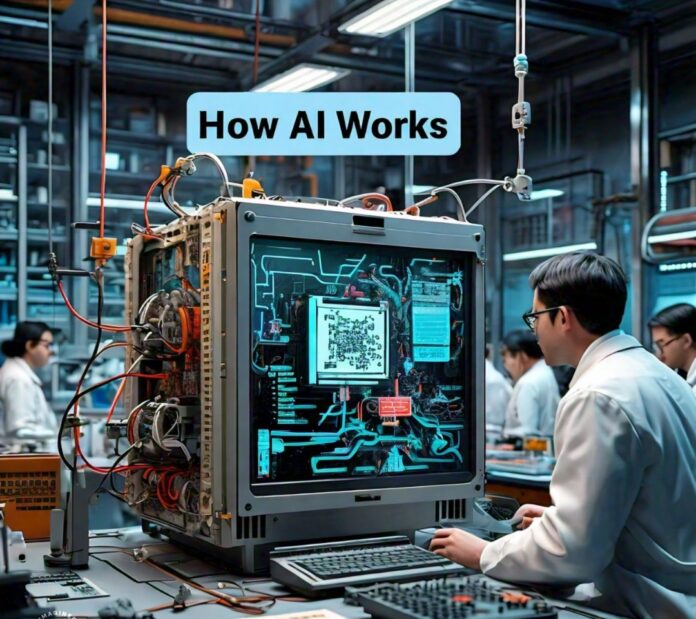How does AI work in simple terms
1. Introduction to Artificial Intelligence (AI)
Artificial Intelligence, commonly called AI, is a unexpectedly evolving field that makes a speciality of growing machines or structures which could perform obligations that could commonly require human intelligence. these duties consist of mastering, reasoning, hassle–fixing, belief, and language understanding.
2. Understanding the Basics of AI
What is AI?
AI contains a huge variety of technologies and methodologies aimed at simulating human intelligence. It entails teaching machines to mimic cognitive functions inclusive of gaining knowledge of from revel in, recognizing styles, and making selections based on facts.
The Different Types of AI
There are in the main types of AI: slender AI and trendy AI. slim AI, additionally called vulnerable AI, is designed to carry out specific obligations, inclusive of virtual assistants or recommendation structures. then again, fashionable AI, additionally called strong AI, ambitions to showcase human-like intelligence and can carry out any intellectual assignment that a human can.
Machine Learning: The Backbone of AI
system studying is a subset of AI that permits machines to research from facts with out being explicitly programmed. It uses algorithms to parse statistics, examine from it, after which make predictions or decisions primarily based on that gaining knowledge of.
Deep Learning: A Subset of Machine Learning
Deep getting to know is a specialized shape of gadget learning inspired by the structure and characteristic of the human brain. It entails neural networks with more than one layers which can examine representations of statistics thru a hierarchical system.
3. How Does AI Work?
Data Collection
step one in building an AI system is accumulating applicable facts. This facts serves because the fuel for schooling the AI version and consists of textual content, pix, movies, or some other shape of statistics.
Data Preprocessing
as soon as the records is accrued, it desires to be preprocessed to ensure it is easy, applicable, and formatted well for evaluation. This step entails responsibilities like cleansing, reworking, and encoding the records.
Training the Model
schooling the AI model entails feeding the preprocessed information into an set of rules and adjusting its parameters to optimize performance. This procedure commonly calls for a massive amount of labeled data and computational electricity.
Testing and Evaluation
After the model is trained, it undergoes testing to assess its overall performance and accuracy. This step facilitates perceive any weaknesses or areas for improvement before deploying the AI gadget in real–international eventualities.
Deployment
once the AI version has been tested and confirmed to be powerful, it can be deployed to be used in diverse programs, such as self reliant automobiles, digital assistants, or predictive analytics gear.
4. Real-World Applications of AI
AI has numerous packages throughout various industries, together with:
- Healthcare: AI is used for scientific imaging analysis, drug discovery, personalised medication, and affected person care management.
- Finance: AI powers algorithmic buying and selling, fraud detection, risk evaluation, and customer support automation within the finance industry.
- Retail: AI is utilized for demand forecasting, customer segmentation, customized tips, and inventory management.
- Transportation: AI enables autonomous cars, visitors management structures, course optimization, and predictive preservation in transportation.
5. The Future of AI
Ethical Considerations
As AI era keeps to increase, it raises ethical worries regarding privacy, bias, process displacement, and the capacity for misuse. Addressing those worries is important for ensuring the accountable improvement and deployment of AI systems.
Advancement and Challenges
The destiny of AI holds sizeable capability for advancements in areas together with herbal language processing, robotics, and reinforcement getting to know. but, massive challenges remain, consisting of algorithmic bias, data privateness, and the ethical implications of AI-powered decision-making.


Hello there, just became aware of your blog through Google, and found
that it’s truly informative. I am going to watch out for brussels.
I’ll be grateful if you continue this in future.
Many people will be benefited from your writing. Cheers!
Escape rooms hub